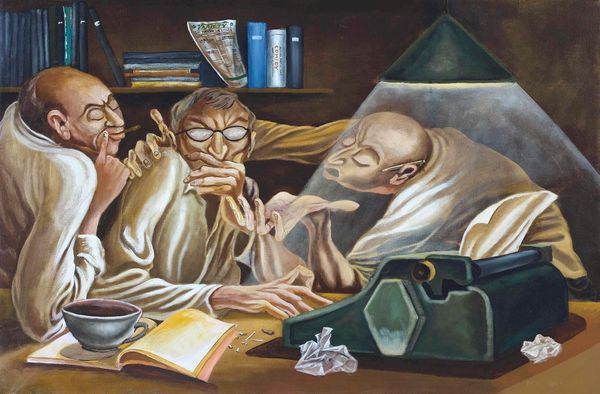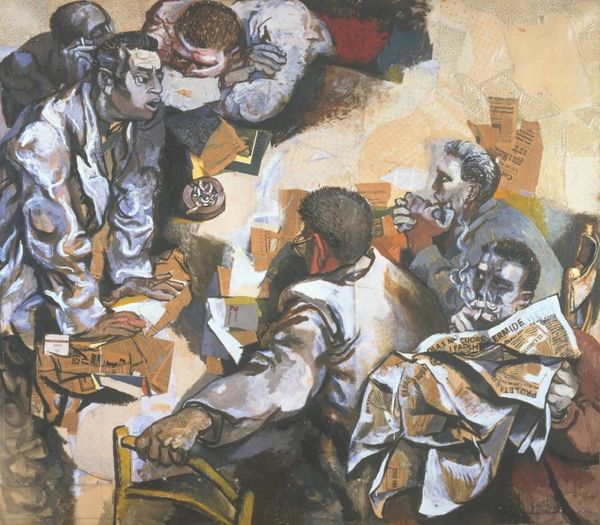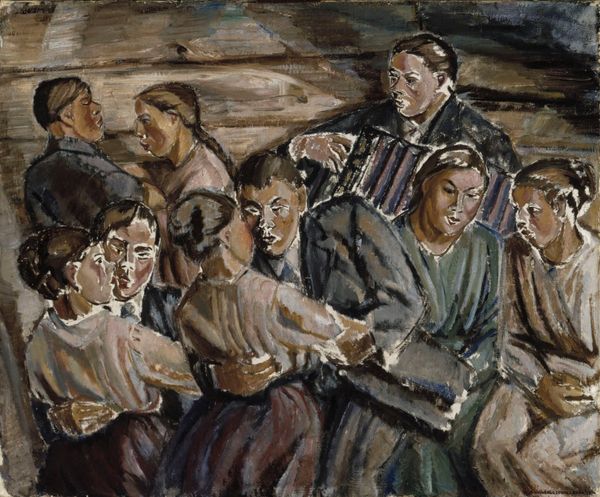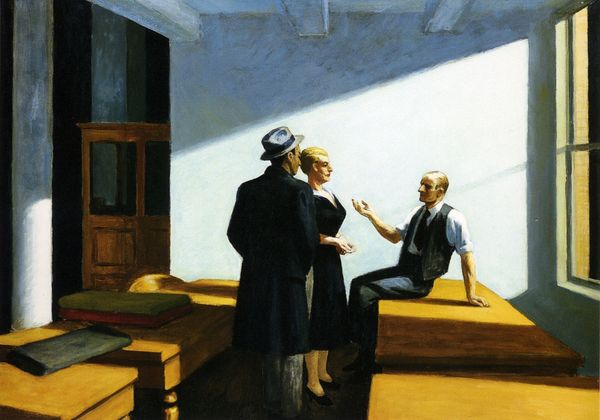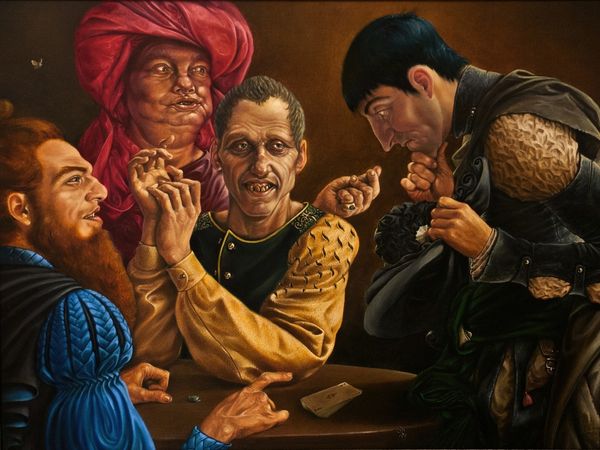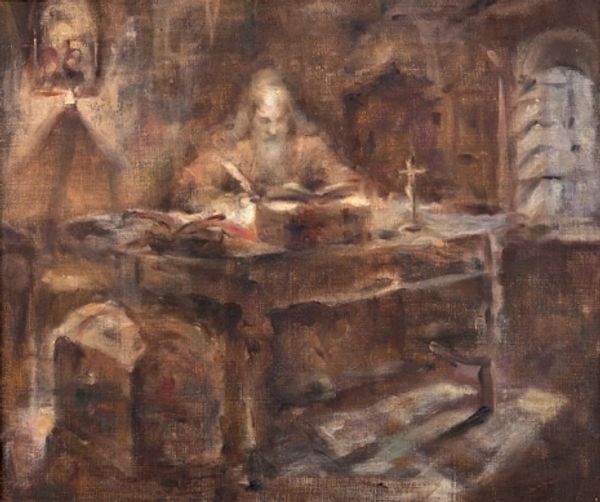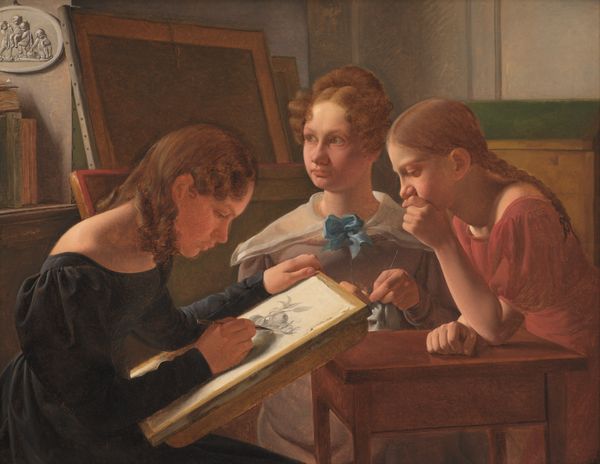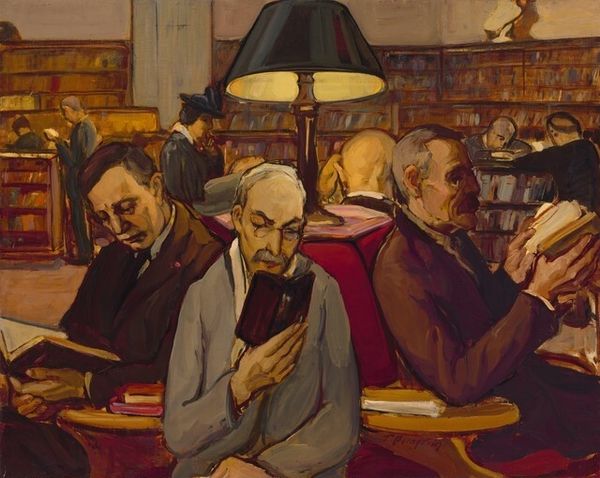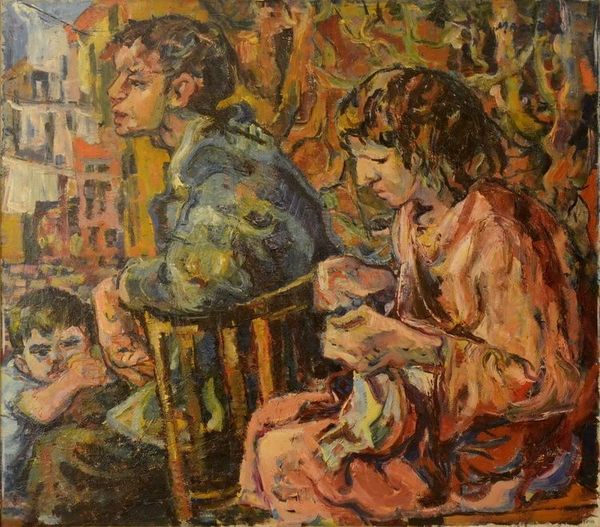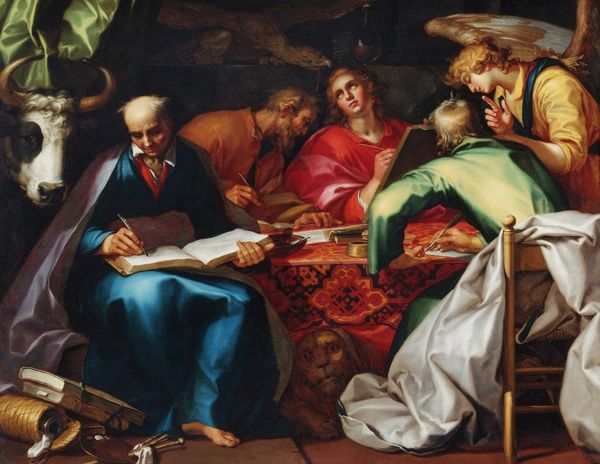
painting, oil-paint, impasto
#
portrait
#
cubism
#
painting
#
oil-paint
#
impasto
#
group-portraits
#
genre-painting
#
facial portrait
#
portrait art
Copyright: Public domain
Curator: Let's take a closer look at María Blanchard's 1924 painting, "La Echadora De Cartas," created with oil paint, showcasing a distinctive impasto technique. What is your first impression? Editor: The thick paint gives it a weight, a heaviness. And the figures...they're compressed into the space, a claustrophobic sort of premonition almost. Curator: Blanchard utilizes Cubist-inspired techniques here, fragmenting and reassembling the figures. It moves beyond simple representation, delving into a complex interpretation of form, space and especially, process. Notice how the artist has made use of the very construction of this scene; each painted part serves as evidence for a certain aspect of the daily life on display. Editor: The cards are laid out so starkly on the table, it's a symbolic space. It suggests fate, predetermination, doesn't it? It seems as though the act of playing these cards is not something they have decided on their own but it has been thrust upon them. I can't tell you what is more compelling, the boy playing or the older woman staring at something just above the audience, hopeful, eager almost. Curator: The social context is also vital; consider Blanchard’s own struggles as a disabled woman navigating the male-dominated art world of her time. Do you think this piece alludes to labor in any way? Is this a paid endeavor or some sort of familial connection? Editor: Look closer; the maternal figures seem to offer care but also perhaps are relying on the fate of the cards to deliver good fortune. Curator: Interesting how we read things so differently. For me the impasto work represents something deeply internal while you see external hope! Editor: Yes! Ultimately the symbols become ambiguous in a group, and I would argue, are not that easily divined by those involved in them or the audience interpreting them. A lasting statement. Curator: Blanchard gives us plenty to reflect on from the perspective of method and reception.
Comments
No comments
Be the first to comment and join the conversation on the ultimate creative platform.

